Manga Will Always Have a Special Place in My Heart…
Reading, writing about, podcasting about, and sharing manga with others is a favorite pastime for me. As I noted in the first part of A Love Letter to Josei Manga: that after a while, I found myself wearing my grown woman panties and reading more of a specific genre. While Shojo manga has always and will always have a special corner in my heart for being my first genre of manga I ever read, Josei is the genre that has carried me through some heartbreak and real-life workplace drama in my adult years.
For those that need a refresher: What exactly is Josei? Pronounced “JOH-say”, it is what I like to call Shojo manga’s big sister. OR final form. Familiar with the manga genre known as Shonen? As in “Shonen Jump”? Shonen is to Seinen as Shojo is to Josei. Where Shojo’s targeted audience is somewhere between 12-18 years of age, Josei’s targeted audience targets the age group directly after that: adult women.
I like to think that there are three major differences that set Josei apart from Shojo:
1.) More mature most def more complex stories that touch on themes such as higher education, careers, and family life. The joys and pitfalls of marriage and children are popular subjects that often weave themselves into many different Josei manga.
2.) Way more realistic romance. Way more. And by realistic, I mean…Yes, I’m talking about SEX!
Gone, mostly are the Shojo sparkles that flutter off the eyelashes of the cute school girl about to confess to her senpai and replaced with panels that are of folk involved in more intimate scenes of affection.
3.) Characters that are slightly older—It’s not uncommon to have a protagonist or a set of characters that are older, from late teens to late twenties and beyond. Lastly, the importance of solid female friendships (and maintaining them) is yet another popular theme.
I started reading my first Josei titles in high school under the guise that they were Shojo. I wasn’t disappointed. Far from it. I was just hit by cupid’s arrow down a path that would have me stumbling and discovering more and more Josei manga. Here are just a few of my favorite Josei titles, their contributions to the genre, and why I loved them…. (And I kept this as spoiler free as much as I could, folks…)
1. Sakuran (Vertical Inc) Created by Moyoco Anno
What’s It About:
Kiyoha is sold into a brothel as a child and forced to work as a maid. The manga details her rise to prominence and fame as one of the top-ranking courtesans in Yoshiwara. There is usually a lot of glamorous takes when tackling lives of such women who become a tayu or oiran courtesan, yet this one throws in the heartbreak, the societal rules, and the varying ways of forcing women into strict gender roles that complicate the narrative.
You should read it if…
…you have a liking for manga that leans into the historical genre and that is also is written by a female mangaka. The person who runs Otaku Netizen Reviews blog brilliantly points out the timing of the release of Sakuran and the ensuing drama and controversy of Memoirs of a Geisha both in book and film form. While we’ve all become well acquainted with what happens when our stories get penned and placed on screen adapted for new audiences by folks who don’t look like us or have our lived experiences, it is with a great recommendation that I’d place Sakuran in your court to read.
Written and illustrated by a Japanese woman about Japanese girls and women who live as orian, it is singularly much more objective and culturally sound to read. I’d be remiss to mention that in the hands of a woman, Chiyo’s struggles for agency are much more pronounced and elaborated on. The manga-kai Moyoco Anno often creates manga in the Josei scene that hits on the hard notes; she isn’t afraid to show the gloom and doom that her female characters experience. It may not be all rain bows and sunshine, yet having read more of her work, I know her style is much more balanced to show a measure or realism that I always appreciate. Lastly, Anno is one of the best manga-kai in the industry when it comes to fashion in my opinion, have you seen her Instagram? There’s a number fully colored pages illustrated by her in this book that look divine with all the details of the kimonos to the background manga effects.
Why I loved this series:
I think some folks avoid period pieces or the historical genre in most mediums like books or film because they believe that such texts or films are boring. Or some may be wary because of the representation or treatment of marginalized pieces when certain individuals or groups are centered. A valid concern I won’t lie.
I really dig Sakuran as it shows us the coming of age of a young woman in a pleasure quarter in the Edo period and the complexities of her station and the consequences of her actions. What does agency look like for a woman? What are the dangers for women in glided cages behind perfumed screens? Kiyoha is a strong-willed young woman who is too stubborn, too wild, and too much to fit any one box or conversation. She’s reckless and has hopes and dreams.
I didn’t go in expecting a happy ending, yet I didn’t go in thinking this wasn’t going to be thought of as dark and provocative and therefore understood. I really, really, really think this is just one of those completely underrated titles that aren’t for the mainstream manga reader. I cringe whenever I think about the reviews of this title on Goodreads. Sakuran ultimately is a tale about a woman in the past choosing her own destiny and making the best with what she has, wielding that power over others, including men.
Length of Series/Availability:
One volume. Just one.
Lasting Legacy:
There was a film adapted from the manga back in 2006 directed by famed filmmaker and photographer Mika Ninagawa. While not a huge hit here in the States, many critics couldn’t help but remark how that brilliant visuals set the film apart from others. I’m super impressed by the handling of a film adaptation of a manga about Japanese woman written by one and also by a female director.
2. Will I Be Single Forever? (Kodansha) Created by Mari Okazaki
What’s It About:
This volume, titled Will I Be Single Forever?, is a collection of intersecting stories based on an essay by Mami Amamayi, a Japanese feminist and writer who passed away in 2016 before the English translation of this hit last year. These short stories in panel form follow a small group of women in their thirties who aren’t married, work jobs that they love, and have female friends that they can depend on. The stories intersect between the three women, and they are experiencing everything from figuring out how to go on vacation solo dolo after a breakup to being the oddball at family gatherings because you’re unmarried but successful.
You should read it if…
You’re a Mari Okazaki stan like myself and you have a never satisfied hole in your heart from TokyoPop never finished putting out Suppli, the gateway series for many readers. You should also pick this one up for the interview with the manga-kai and the writer who wrote the essay that the manga is based off of. It is an insightful and truly interesting look into the social commentary that women face in regards to social status, family, again, and careers. I also can’t help but mention it goes into inspiration and creative work as women that’s worth reading.
What I will warn is that there is a very BIG SPOILER for the ending of the Suppli manga series that lovers of that series who never finished will want to be aware of. Seriously! I dropped my kindle while reading and had to collect myself. WHEW! This spoiler is in the interview transcript on the second to last page of the interview (page 158), and I wasn’t ready. Good back and forth dialogue concerning reader expectations and Japanese societal views of women: working ones, mothers, etc, but there was no way to warn myself. Here’s my friendly warning to you, y’all.
I also would not suggest this title to new Josei readers. This is what I’d buy for the seasoned readers among us and for those who have a working knowledge of Ozaki and her work.
Why I loved this series:
There is this really endearing way of exploration in manga that Ozaki does that pairs well with how expressive her artwork can be that works well with stories about women that she excels at. In Will I Be Single Forever?, as a reader who stepped into the shoes of these female friends and saw their problems and their hopes on display, I saw myself in Yukino, fresh from a breakup and wobbly as a baby lamb on new legs about doing shit without a dude attached. I’m also her being attacked by a nostalgia bomb with encounters of exs and being reminded of why I ended relationships with men that made me feel small and hate big parts of myself.
A theme that is covered here that so many texts don’t get right is that being single doesn’t mean that you’re lonely. Marriage isn’t endgame to happiness. Having fulfilling lives that work, friends and discovering new things, and traveling to new places can and does define us. Marion for Otaku, She wrote really hit the nail on the head when they wrote that about the message being about choices that women have. In regards to marriage–it shouldn’t be something you jump into because you are afraid. In their own words: “Will I be Single Forever? places value on how these women are using their own strength to live the lives they want” which is a hell of a message to have in regards to women, their agency in the world, and ultimately their happiness.
I also saw myself in Shimzu when she gives Mami the advance copy of the magazine they worked on; she’s so excited she’s lit up like a Christmas tree. She’s damn proud of their work, of their labor is an actual, visually creation that now exists in the world that people will be able to pick up in read. I’m in the panel too as Shimzu, a burst of energy. Other times I read, I’m Mami on the other end, smiling and seemingly grateful for other women in my life, especially in the work world–happy that another woman is ecstatic about the creative work by another woman.
Lasting Legacy:
Granted as I noted earlier, the author of the essay that the manga series is based on, Mami Amamayi, passed away, so I can’t predict any more collaborations between her and manga-kai Okazaki. Yet, I really feel this is an incredible volume of manga to behold simply for being an illustrative example of the reach of not just manga but also women’s work in the writing and publishing industries. Both women were fans of each other, followed their work and ended up collaborating which resulted in this manga. Even without the interview itself tagged in at the end, the manga itself speaks to so much happening to women, covers so much common ground with a nuance that only women could bring. I’d love to see more collab work like this that centers women published in English for an audience outside of Japan. This certainly adds to the wealth of Josei manga in the wave of it that we’ve been riding, and I’m grateful.
Length of Series/Availability:
A single volume, for those who are concerned about commitment to purchasing a long series. Just a one hitta quitta via a digital release.
3. Ōoku: The Inner Chambers (VIZ Media) Created by Fumi Yoshinaga
What’s It About:
In the Edo-period of Japan, there’s a strange new disease called the Red Pox that has befallen the men of the country. Within eighty years of the first outbreak, the male population falls by seventy-five percent. Thus, women have taken on all of the roles traditionally granted to men, even that of the Shogun. The men are carefully protected and sought after. And the most beautiful of the men, the most alluring are sent to serve in the Shogun’s Inner Chamber.
You should read it if…
You got a historical genre fix, and you need a fix for that is a longer series. Like Sakuran, Ōoku: The Inner Chambers is the handling of women in an earlier period in Japanese history written and illustrated by a woman. Yet what sets Ōoku apart is that this manga is as much a narrative about the men as it is for the women. Let me clarify: this gender bent reversal of society and government places men in the supporting role women have been known occupy and serve. Read if you want a world where gender in all its capabilities is questioned: in this context what does being a woman mean? What does being a man? You’d be surprised which one is tasked with such duties and who’s work is considered a scarce commodity.
Why I loved this series:
This series does not focus on one man or woman, or one couple or even one generation, no! Yoshinaga has crafted such a multi-layered story over time and several characters that have depth, hopes, and dreams. Known for presenting personal issues on the panels with ease as I’ve seen in What Did You Eat Yesterday? and All My Darling Daughters. Some are resigned into duty, some ache for a love that is for them, others close their eyes to such forbidden desires. Each new female shogun brings a new face to the who leads the land, and this also brings new personalities to be challenged by new problems and new limitations of her gender. Who will bear an heir, who will be blinded by love, and who will want to forsake her duty? As Alison Tam wrote of the first half of the series on Anime Feminist, “They cannot smash the entire system their lives have been built upon in just one lifetime, but their worth is not predicated upon their ability to change society. They are worthy of empathy, of tenderness, of having their stories told, just by virtue of their existence.”
There is a focus also on the men in society, the men who make up the inner chambers for the Shogun, and it is a captivating read to see the role reversals to gender roles at play. The institution of marriage has been all but dissolved except for wealthier families and those of Samurai kin, and family structures have been forever changed now that women vastly outnumber men. Some men are drawn to try their hand to be near the Shogun to provide for their families, others desire for a sense of purpose or fulfillment or vanity. Others are taken from their designated life’s path and forced into the inner chambers to be playthings, bridegrooms, and caught in the web of being beautiful objects to behold. Ultimately, Ooku explores this fictionalized version of Japan’s past where men are captured for the betterment and enjoyment of servitude of the leaders of the country, the various announcements of Shoguns, and they have to endure the lives they now have to led. Yoshinaga has effectively drawn out this impressive narrative with volume after volume of scores of people whose lives kept me reading and emotionally invested–quality material here, folks.
Length of Series/Availability:
(16 volumes at time of writing) Ōoku: The Inner Chambers, as a series finished at 19 volumes in 2022.
Lasting Legacy:
A 2010 film, titled The Lady Shogun and Her Men which boasted a female screenwriter Natsuko Takahashi to adapt the manga fro the big screen. There is also a ten episode drama series that aired back in 2012 based on a handful of volumes from the manga. UPDATE: A second season of that live action drama sometime in 2023 as tweeted by the Twitter account of the show.
4. Kakafukaka (Kodansha) Created by Takumi Ishida
What’s It About:
Aki Terada is a twenty-four-year-old loser who after toughing it out in college, couldn’t get a big company job after graduating. She ends up working at her local convenience store and is just aimlessly working her life away. One day she heads home and catches her live-in boyfriend with another woman, and she instantly moves out. Now living at a share house aka with a place with roommates, she runs into the guy we may assign as her first love, or at least the guy who was her first of a many things when she was a teenager. It’s a shocking development as he’s one of her new housemates, and the story gets further complicated when the two are in close proximity to each other and discover the biggest drama bomb that erupts in front of them.
You should read it if…
You want to try something in the Josei pool that’s different yet still fairly new.
Now this is the curve ball of the list, and I reckon this is the hit or miss of the list as well. I went back and forth on whether I should include this one and decided on welcoming it into the fold even though I hadn’t finished most of the series yet. Aki is a character that gives you the feeling of hitting rock bottom, and you’re just wandering not have a concrete plan. Reading along just feels like when life suplexes you into next Tuesday, and you don’t even have clean laundry or any notable savings to sit on.
Pick up the first volume of this series if you want some heavy angst with someone who lives in her head too much–Aki is a young woman who really is starting to have this thought-provoking character arc. One of the biggest standout moments in the what I’ve read so far is when Aki, while still working at her convenience store job, gets jokingly tagged by a coworker with a ‘half off’ sticker meant for the marked down food products in the store. If I remember correctly, this happens after the avalanche of tragedy has gone wrong in her life, and she’s stunned. She mentally places herself as someone less than, something cheapen. We return to this mindset again in different points in the series where she starts to question what she’s worth and what she is deserving of. It is a long road to self-love, a long road exploring her feelings, and also a terribly long road to figuring out what agency she has and how to be assertive.
Why I loved this series:
While, perhaps may be regarded as the softest pick of this list, this manga still goes hard in the paint about such big-ticket topics like self-worth. There’s a lot of thought that went into the writing regarding boundaries and intimacy. Takumi Ishida explores what intimacy looks like and demonstrates on the page what boundaries can look like and how one reacts to people not respecting them. And not just with the person who you want to be hot and heavy with but also people you live with, people you might call friend and even, coworkers.
Yet, I won’t lie there were plenty of times when I was frustrated with Aki and her wavering–there were plenty of times I wanted to throw my kindle out the window. The big reveal about Tomoyo in the first volume is an eye-opening topic that I haven’t seen in Josei manga at all I don’t think, and it is done in a way to not stigmatize how we look and talk about such. Lastly, the overarching story of dysfunctional young adults in their twenties in a share house blended in with the topics of mental health, second chances, and cohabitation make it a manga I want to read more of.
What also came across really expressed well in the writing was empathy and how it looked on different people. Reading more about how Aki once saw herself as this fearless and capable girl and the decline as she grew older is a narrative further complicated by her fellow share housemates aka her roommates–Aki soon becomes someone admired, appreciated and loved even. She goes from becoming someone who was a second thought to eventually someone who impacts the house and everyone who lives in it, and that made this a page-turner.
Not sure if she’s written by the mangaka to be the underdog character, but there’s a sense of urgency attached to her, her living situation, and her new-found strange family that erupts into a love triangle square that is hilariously over the top and a lesson in the making for the reader. 2023 Update: Upon reading the start of the series I am okay with not recommending it past a few volumes. Later volumes but threw me for a loop with a story arc that dragged on at the price of some character development for a few important characters which was unfortunate. The start of the series was stronger than the second half of the series. Perhaps one day, I’ll return and finish it but today is not that day.
Length of Series/Availability:
Seven volumes via digital release at time of writing. (Kakafuaka finished with twelve volumes in 2021)
Lasting Legacy:
A ten-episode drama airing that I am currently watching and screaming internally and seriously tempted to throwing pillows around the room.
5. Tokyo Tarareba Girls (Kodansha) Created by Akiko Higashimura
What’s It About:
Rinko has done everything right. She hustled her way through her twenties to make it as a screenwriter, renting her own office in a trendy Tokyo neighborhood. Everything should have gone according to plan. So at 33, she can’t help but lament the fact that her career’s plateaued, she’s still painfully single, and she spends most of her nights drinking with her two besties at their favorite pub. One night, drunk and delusional, Rinko swears to get married by the time the Tokyo Olympics roll around in 2020. But finding a man—and love—may be a cutthroat, dirty job for a romantic at heart.
You should read it if…
Fair warning and disclaimer: you are going be pissed TF off when reading this manga series. You are going to have your feelings HURT. And you’re going to rage. And cry. You’ll celebrate too but Moto Hagio as my witness, it is a journey to take and endure as a reader. Baby girl, if you’re single woman unattached hitting the end of your twenties or hell, in your thirties, put this next to your Bible or Holy book of your choosing because this is crucial.
Kodansha bills this as “a sharp new comedy about female friendship from the creator of Princess Jellyfish,” and they were NOT wrong. Read this one if you want to see more stories about womenfolk who aren’t fresh-faced teenagers anymore but are still deserving of love, companionship, and feeling fulfilled by work and the lives they lead despite all the dead ends and wrong paths they choose.
Why I loved this series:
As I once tweeted: “TOKYO TARAREBA GIRLS HITS HARDER WHEN YOU’RE CLOSER TO 33 THAN 22. ? ” Previously only available as a Digital Manga release, I was ecstatic to learn that Kodansha was finally putting this series into print for those of us who graduated from Princess Jellyfish and wanted more Akiko Higashimura. I had feels, lots of feels that took time to process–that I’m actually still processing now and will be for a while–from jump, from volume one. By volume four and five, I was openly weeping in a coffee shop in a neighborhood not of my own with teenage boys eyeing me wondering what the hell was wrong with me. As much as the story is about…this quest for love and how societal expectations force women to learn to settle and losing parts of themselves, it is every bit of a story about the sacred communion of female friendships with a ‘we all we got’ type of attitude.
I can’t stress this enough: being older and seeing older woman around my age on the page having each other’s backs is marvelous and cannot be understated. It’s a really beautiful thing to see Rinko, Kaori and Koyuki in various and really relatable (*crying*) phases from drinking and celebrating to texting each other for advice to running away from situations that they never should have been in the first place. Of course, this is Rinko’s story in the way she’s on a quest to get it right, get her life together, and find love before it’s too late–it is every bit of a love story between her and her girls struggling, loving, and fighting back for their chance at happiness.
In a sense of you think of Princess Jellyfish with our darling jellyfish Otaku Tsukimi, one could say the “A plot” would be saving the Amamizukan, the safe place for the Amars and the found family of the women there. While the “B plot” could be the transformation of Tsukimi into the woman she becomes: the young woman that we see at the end of the series. There is certainly a focus on the Amars, the group of fujoshi that our girl has come to befriends and call her own family and the bond they have and the growing up they do.
Yet, here in Tokyo Tarareba girls, this group of women is a different type of animal. For starters with only three of them, it just feels more intimate. With them being older, with them knowing each other since they were eighteen years old, just starting out in the city gives this band of friendship a depth that really came across in the panels. I’m slow on the uptake because it did take me physically reading several volumes in the series and glancing at the covers of said volumes to really get the big picture of the importance of women having their friends, of having their squad, of having their gal pals. Of the total nine volumes (for the English translation versions at least), Rinko, Kaori, and Koyuki are featured on all but one volume. It’s a visual that further demonstrates just how important women are in the lives of other women and, in this narrative, just how imperative it is to have them in your corner.
Length of Series/Availability:
A nine-volume series in total with volume six being released later this month at time of writing. (Tokyo Tarareba Girls finished with nine volumes in 2019.) A Digital only sequel, titled Tokyo Tarareba Girls Returns was released after in 2020.
Lasting Legacy:
A 10-episode Japanese drama series adaptation aired in 2017.
In Closing
To wrap this up, if there is one truth that we should keep evident in our hearts it is that manga is and will always be important literature. I cherished it from the starting point that was my childhood through my adolescence to the present day of my adulthood.
I figure I’ll be an old lady reading Yotsuba to my great grandbabies stopping only to adjust my glasses and to sit up straighter in my rocking chair. It’s important to note that when you grow up reading manga, sooner or later you find yourself reading a volume of some manga that causes you to reflect on something in your adult life with so much clarity. It may also serve to parallel an experience you’ve yet to encounter. Josei manga has had such a big impact on me, because I’ve seen life lessons in those panels.
I’ve seen women stand up a little bit straighter to call out some asshole to defend their friends. I’ve seen female characters shift through defeat, stare failure right in the eye, and rise again somehow.
I’ve seen relationships end, and the womenfolk involved mourn and grieve, and eventually, one day, start again. I’ve seen myself drawn on countless pages of Josei manga: in love, heartbroken, and scared–backed into a corner.
I’ve found myself on pages of Josei manga: vindicated, victorious, and fearless–refusing to give in to fear, stereotypes, circumstances, and emerge as some new kind of vibrant butterfly.
The relationship I’ve had with Josei Manga is unlike any other and a love letter I hope to continue to write for years to come.
Love,
Carrie
Read more of our site’s reviews of manga here.
_______________________________________________________________________________________________________________
Editor’s Notes: Original Publication: June 2019.
Piece was updated February 2023 to reflect a few changes end dates and final volumes for mentioned series including Ōoku: The Inner Chambers.
Piece was updated February 2023 to update broken links.
___________________________________________________________________________________________________________________
Want to get Black Nerd Problems updates sent directly to you? Sign up here!
Follow us on Twitter, Facebook and Instagram!



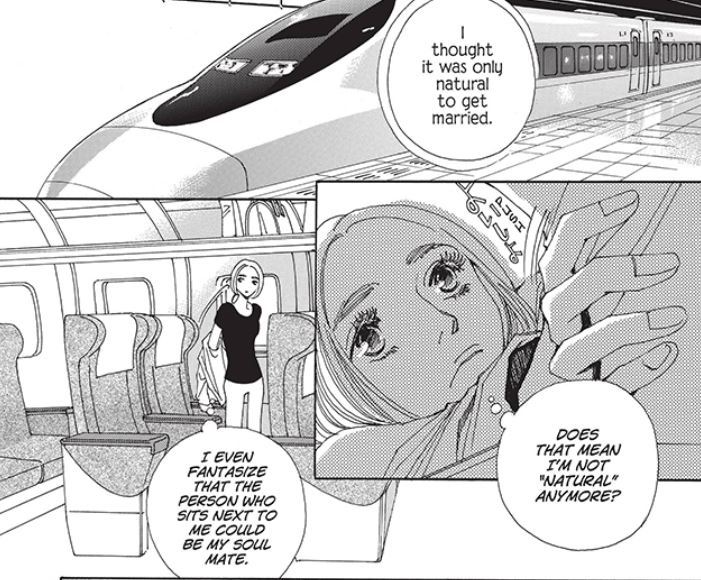
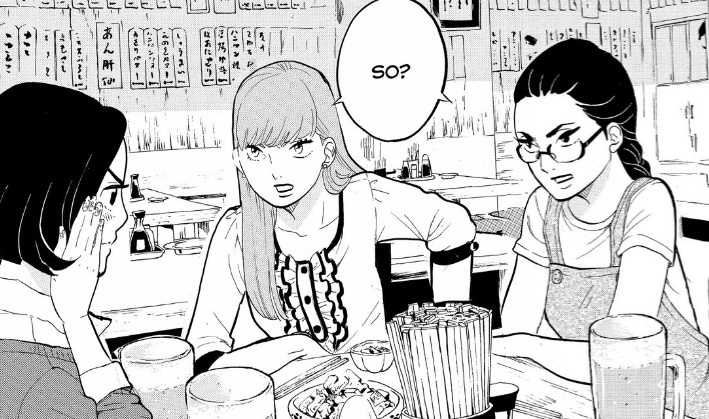
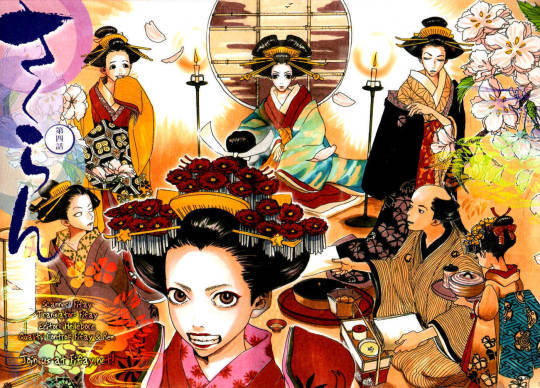



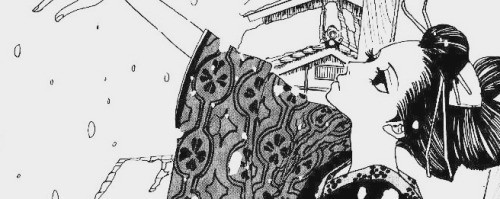




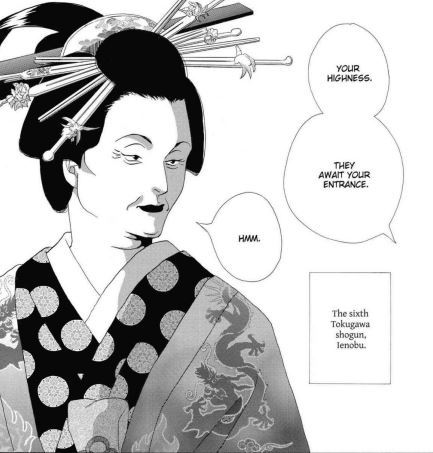
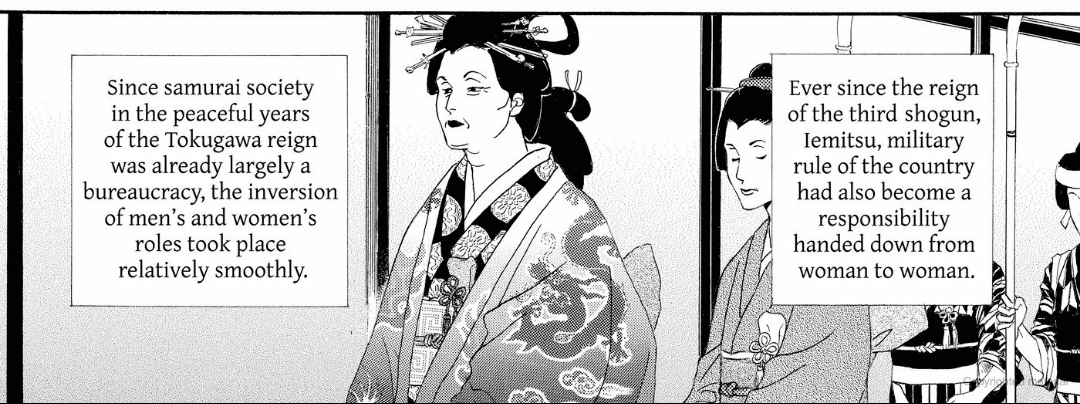

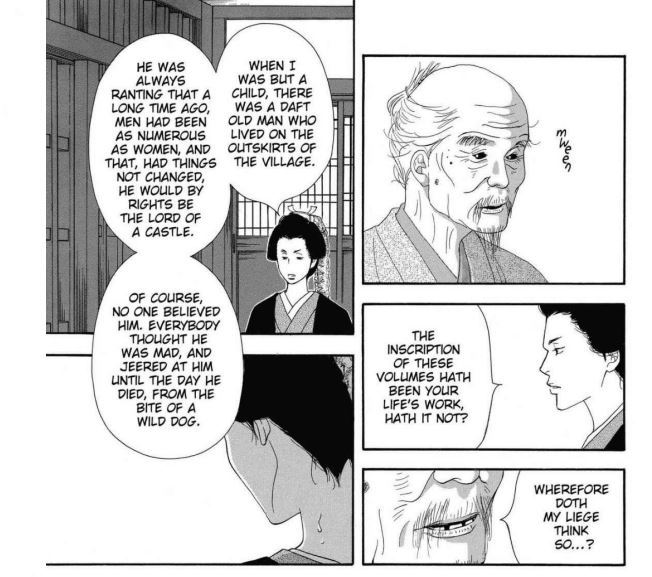


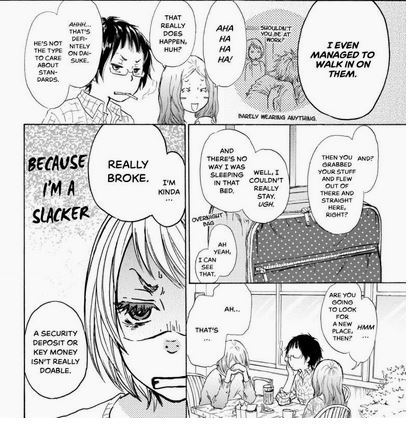






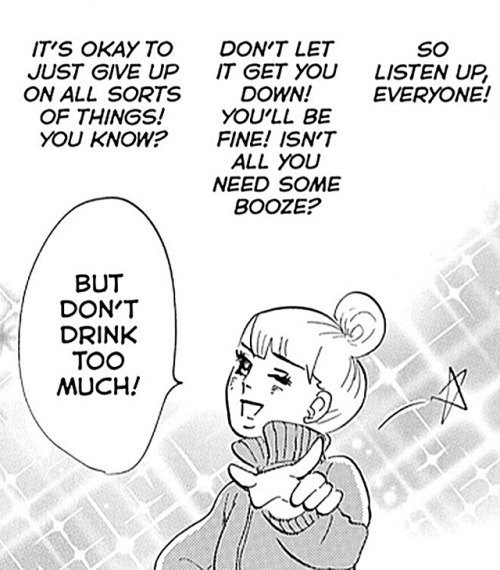


Show Comments